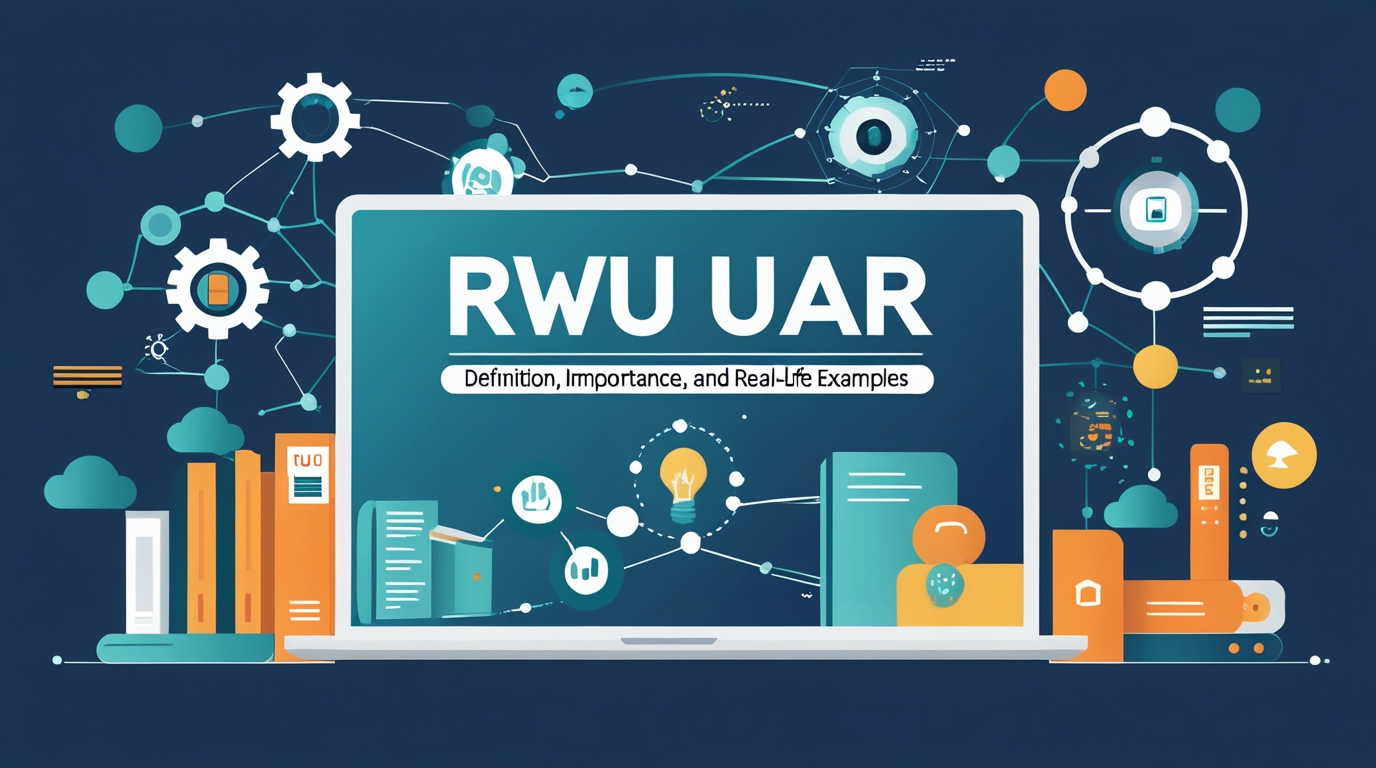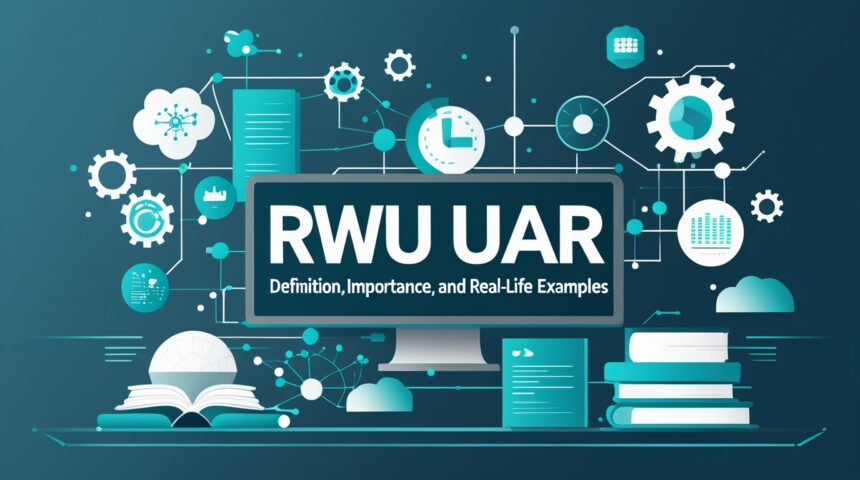In today’s world of fast-moving technology and expanding digital networks, terms like RWU UAR are becoming more visible in discussions around innovation, development, and problem-solving. While at first glance the acronym may seem confusing, it carries growing relevance across several industries. Understanding its definition, practical importance, and real-world examples can help readers connect the concept of RWU UAR to everyday life and professional use. Whether you are a student exploring modern trends, a professional looking for applied solutions, or simply curious about emerging terminology, this guide breaks everything down into clear, actionable insights.
What is RWU UAR? (Definition)
At its core, RWU UAR is understood as a structured framework or concept that emphasizes the integration of resources, workflow, and usability in adaptive environments. The abbreviation is applied in contexts where efficiency, user accessibility, and real-time decision-making intersect. In plain terms, RWU UAR represents a model that explains how systems can respond better to changing conditions, streamline operations, and create more meaningful results for end users.
By definition, it is not restricted to one single field—it may appear in education, software engineering, healthcare planning, and even organizational management. The flexibility of RWU UAR makes it a versatile concept that supports broader discussions around productivity and innovation.
The Importance of RWU UAR in Modern Contexts

Why should anyone care about RWU UAR? The answer lies in its ability to improve outcomes in both personal and professional settings. In workplaces, RWU UAR helps teams adopt strategies that make tasks simpler and more reliable. For digital platforms, it ensures user experience is optimized through responsive structures. And in education, it offers a framework for aligning resources with student needs in a more dynamic way.
The importance of RWU UAR is also tied to its adaptability. In a world where challenges change daily, frameworks like RWU UAR ensure organizations and individuals stay ahead. Its focus on usability, accessibility, and results makes it a powerful concept for guiding long-term growth.
Key Features of RWU UAR
Several key features highlight why RWU UAR continues to gain attention:
-
Adaptability: RWU UAR systems are designed to adjust to changing environments.
-
User-Centered Approach: A primary feature is its commitment to accessibility and ease of use.
-
Resource Optimization: By aligning resources efficiently, RWU UAR reduces waste and maximizes outcomes.
-
Scalability: From small applications to large organizations, it scales effectively.
-
Interdisciplinary Value: RWU UAR is not locked to one industry, giving it cross-sector importance.
These features explain why leaders, developers, and educators see RWU UAR as more than a passing term—it’s a tool that can reshape long-standing systems.
RWU UAR in Education
In U.S. education, innovation is at the heart of preparing students for a global economy. RWU UAR in education often refers to aligning teaching methods, digital tools, and support resources in ways that meet diverse learning needs. For example, digital platforms that adapt lessons to a student’s skill level embody the same principles that RWU UAR emphasizes—efficiency, accessibility, and responsiveness.
By focusing on adaptability, schools and universities can create inclusive learning environments where students thrive regardless of their background. This is one of the clearest real-life examples of how RWU UAR principles can improve an entire system.
RWU UAR in Technology and Digital Systems
The tech industry provides another rich example of how RWU UAR applies. In software development, it can mean creating applications that respond in real time to user interactions. Consider modern mobile apps that adjust interfaces based on user behavior or websites that optimize content depending on device type—these are aligned with the RWU UAR model.
For IT professionals, the importance of RWU UAR lies in how it ensures smooth workflows, efficient data management, and better user satisfaction. With the rise of AI and automation, its role in digital ecosystems will only expand.
RWU UAR in Business and Organizational Management
Companies today face complex challenges that demand efficiency and adaptability. RWU UAR in business helps leaders design strategies that align resources with immediate needs while preparing for long-term growth. For example, a company may implement a RWU UAR-inspired system to allocate employee tasks based on strengths, track workflow in real time, and improve decision-making with data-driven insights.
This creates a workplace culture that values clarity, fairness, and productivity. By reducing inefficiencies, businesses save costs and improve employee satisfaction—two outcomes that directly influence success.
Healthcare Applications of RWU UAR
Healthcare is another sector where RWU UAR principles are becoming invaluable. Imagine a hospital system that uses RWU UAR methods to manage patient records, allocate staff, and provide accessible information to both doctors and patients. By ensuring resources and workflows are optimized, hospitals can reduce waiting times, improve care delivery, and minimize stress for both providers and patients.
In an era where U.S. healthcare demands innovation, RWU UAR offers a model that emphasizes patient-centered care while keeping efficiency in focus.
Real-Life Examples of RWU UAR in Action
The abstract idea of RWU UAR becomes clearer when viewed through real-world applications:
-
Universities adopting RWU UAR frameworks for digital learning platforms that adapt to students’ progress.
-
Tech companies using RWU UAR-driven systems to streamline software updates and ensure better user experiences.
-
Businesses applying RWU UAR principles in resource allocation, ensuring projects are delivered on time and within budget.
-
Healthcare organizations improving patient management by integrating RWU UAR-based scheduling and reporting tools.
These examples show that RWU UAR is not just theoretical—it’s practical, measurable, and impactful.
Benefits of RWU UAR for the U.S. Audience
For readers in the United States, RWU UAR has unique benefits. The U.S. economy thrives on innovation, and RWU UAR encourages organizations to adopt modern solutions while staying competitive globally. On an individual level, students, professionals, and everyday users gain value by engaging with systems built around RWU UAR principles—whether in education apps, workplace tools, or healthcare services.
Its importance goes beyond convenience; it reflects a mindset of efficiency, inclusivity, and progress.
Challenges and Limitations of RWU UAR
No system is perfect, and RWU UAR has its challenges. Implementing its principles often requires investment in new technology, training for staff, and overcoming resistance to change. Smaller organizations may struggle with the initial costs, while larger systems may face complexity in integration.
However, these challenges are often temporary. With proper planning and phased adoption, the benefits of RWU UAR generally outweigh the drawbacks. Recognizing limitations ensures organizations use the framework realistically, not ideally.
Future of RWU UAR in Innovation
Looking forward, RWU UAR will likely play an even greater role in shaping industries. With the rise of artificial intelligence, big data, and smart systems, frameworks like RWU UAR are essential to ensure technology works for people—not against them. Its emphasis on usability and adaptability aligns perfectly with the demands of a future where flexibility is the standard, not the exception.
For the U.S. audience, this means more personalized services, smarter digital platforms, and workplaces that prioritize efficiency without sacrificing accessibility.
Final Thoughts
RWU UAR is more than an acronym—it is a framework for improving how we use resources, manage workflows, and prioritize user needs. From classrooms to hospitals to businesses, its principles are shaping systems that are smarter, fairer, and more effective. While challenges exist, the real-life examples highlight its growing importance in everyday life. By understanding RWU UAR, U.S. readers gain insights into how innovation can be both practical and accessible, paving the way for a more adaptive future.
Frequently Asked Questions (FAQs)
1. What does RWU UAR stand for?
RWU UAR refers to a framework that integrates resources, workflow, and usability in adaptive systems. Its exact usage can vary across industries, but it consistently emphasizes efficiency and accessibility.
2. How is RWU UAR applied in education?
In education, RWU UAR appears in adaptive learning platforms that adjust lessons to student progress, ensuring inclusivity and personalized teaching experiences.
3. Why is RWU UAR important in business?
RWU UAR helps businesses allocate resources effectively, streamline workflows, and create fairer systems for employees. This boosts productivity and lowers operational costs.
4. What are the main benefits of RWU UAR?
Key benefits include adaptability, user-centered design, scalability, and efficiency. These advantages apply across technology, healthcare, business, and education.
5. What challenges exist when implementing RWU UAR?
Challenges include initial investment, staff training, and integration complexity. However, with proper planning, these issues can be minimized while unlocking significant long-term value.












